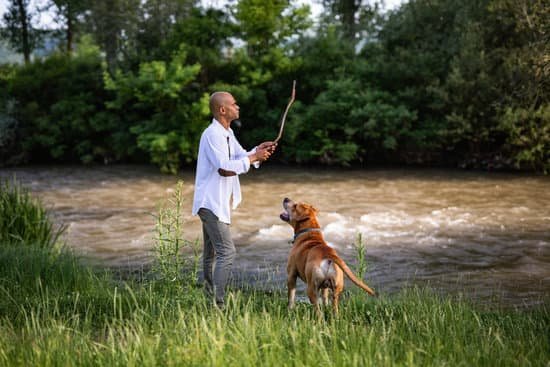Have you ever wondered how to train a rabbit to act like a dog? It might seem like an unusual concept, but with the right approach and techniques, it is indeed possible to teach a rabbit to exhibit some dog-like behaviors. Whether you’re seeking a unique pet experience or simply want to challenge the traditional stereotypes of small animal behavior, training your rabbit to emulate dogs can be an exciting and rewarding endeavor.
Rabbits and dogs, despite their obvious differences, share several natural behaviors and traits that make training for such activities feasible. From socialization and obedience training to agility exercises and reward-based learning, there are various methods that can help bridge the gap between these two species. Understanding these similarities provides insight into how rabbits can be trained to display certain dog-like actions.
In this article, we’ll explore the concept of teaching rabbits to act like dogs and delve into the practical aspects of achieving this goal. From basic training principles and socialization techniques to more advanced skills like agility and trick training, we’ll provide guidance on how you can effectively mold your rabbit’s behavior towards resembling that of a dog.
So if you’re ready to embark on an unconventional yet fulfilling journey with your furry friend, read on to discover how you can train your rabbit to act like a dog.
Similarities Between Rabbits and Dogs
Rabbits and dogs may seem like very different animals, but they actually share several natural behaviors and traits that can make training a rabbit to act like a dog more achievable than one might think. Understanding these similarities can provide valuable insight into how to approach the training process effectively.
Social Structure
Both rabbits and dogs are social creatures that thrive in the company of others. While dogs are known for their pack mentality, rabbits also form strong social bonds within their groups. This shared inclination towards socialization means that both species can benefit from interaction with humans and other animals, making it easier to train a rabbit to exhibit dog-like sociable behaviors.
Playfulness
Another common trait between rabbits and dogs is their playful nature. Dogs are often eager to engage in playtime activities, while rabbits display similar exuberance when provided with toys or stimulating environments. This shared love of play can be harnessed during training sessions as a way to keep the rabbit engaged and motivated.
Intelligence
Despite their small size, both rabbits and dogs are intelligent animals capable of learning and adapting to new situations. Their ability to comprehend commands and respond to training cues makes it possible for rabbits to be trained in much the same way as dogs, albeit with some adjustments based on their unique behaviors.
By recognizing these key similarities between rabbits and dogs, you can approach the training process with confidence, knowing that your rabbit has inherent traits that align with typical dog behaviors. This understanding forms a solid foundation for effectively teaching your rabbit to act like a dog in various aspects of behavior and obedience.
Training Basics
Training a rabbit to act like a dog may sound like a challenging task, but with the right approach and understanding of animal behavior, it can be an achievable goal. The fundamental principles of animal training apply to rabbits just as they do to dogs, although the techniques may need to be adapted to suit their unique characteristics.
Understanding Rabbit Behavior
Before starting any training regimen, it’s important to have a good understanding of rabbit behavior. Rabbits are prey animals, which means they are naturally cautious and sensitive to their surroundings. They respond well to calm, gentle handling and can become stressed in noisy or chaotic environments. Understanding these traits will help you tailor your training methods to suit your rabbit’s needs and personality.
Positive Reinforcement
Positive reinforcement is a key principle in training any animal, including rabbits. This involves rewarding desired behaviors with treats or praise to encourage their repetition. Rabbits respond well to food treats such as small pieces of fruit or vegetables, so using these as rewards can be an effective way to train them. It’s important to be consistent with your rewards and timing so that your rabbit understands which behaviors are being reinforced.
Patience and Consistency
Training a rabbit, like training any animal, requires patience and consistency. It’s essential to set realistic expectations and progress at your rabbit’s pace. Every rabbit is different, so what works for one may not work for another. Consistently practicing training exercises in short daily sessions will help reinforce the desired behaviors and build a strong bond between you and your furry friend.
Socialization Techniques
When training a rabbit to act like a dog, it’s important to focus on socialization techniques to help your pet become more comfortable with humans and other animals. Rabbits are often known for being timid and cautious, but with the right approach, they can learn to be more sociable and outgoing.
One effective technique for socializing your rabbit is to spend quality time with them in a calm and relaxed environment. Sit on the floor and allow your rabbit to approach you at their own pace, offering them treats and gentle pets as they begin to feel more at ease. It’s essential to be patient and consistent with this process, as rabbits may take some time to warm up to new people and experiences.
In addition to spending one-on-one time with your rabbit, it’s also beneficial to introduce them to other animals in a controlled setting. Supervised interactions with friendly dogs or other rabbits can help your pet become more accustomed to different social dynamics and build their confidence.
Always monitor these interactions closely and be prepared to step in if any signs of discomfort or aggression arise. With patience and positive reinforcement, your rabbit can learn to be more sociable and comfortable around humans and other animals, making their transformation into a “dog-like” companion even more successful.
Obedience Training
Rabbits are known for their intelligence and ability to learn, making it possible to train them in much the same way as dogs. Obedience training is a crucial part of teaching your rabbit to act like a dog, as it forms the foundation for more advanced behaviors and tricks. Just like with canines, rabbits can be taught basic commands such as sitting and coming when called through consistent and patient training.
One effective approach to obedience training for rabbits is clicker training, a method that uses a small handheld device to make a clicking sound followed by a treat when the desired behavior is performed. This positive reinforcement technique helps solidify the association between the command and the action, making it easier for your rabbit to understand what is expected of them.
For example, by using the clicker and treats, you can teach your rabbit to sit on command by luring them into a sitting position with a treat held above their head while saying the word “sit.” When they successfully sit down, you click the device and give them the treat instantly.
It’s important to keep training sessions short and enjoyable for your rabbit, as they have short attention spans and can become stressed if pushed too hard. By breaking up training into small, frequent sessions throughout the day, you can prevent your rabbit from becoming overwhelmed while reinforcing good behavior consistently.
Additionally, always use positive reinforcement rather than punishment during training, as rabbits respond best to rewards and encouragement. With patience and perseverance, you’ll find that your rabbit is capable of learning an impressive array of obedience commands just like a dog.
| Obedience Training Techniques | Description |
|---|---|
| Clicker Training | A method using a clicker device and treats for positive reinforcement |
| Short Training Sessions | Breaking up sessions into small and frequent intervals to prevent stress |
| Positive Reinforcement | Rewarding good behavior rather than punishing mistakes |
Agility and Trick Training
When it comes to training your rabbit to act like a dog, engaging in agility and trick training can be both fun and beneficial. Just like dogs, rabbits are capable of learning and performing physical activities that showcase their intelligence, athleticism, and agility. By participating in such activities, rabbits not only receive mental stimulation but also develop a closer bond with their human companions.
One popular dog-like activity that rabbits can excel in is jumping through hoops. This can be achieved by using positive reinforcement techniques and gradually increasing the height of the hoop as your rabbit becomes more confident and skilled. Additionally, teaching your rabbit to fetch toys can provide mental and physical exercise, as well as entertainment for both you and your furry friend.
Incorporating agility and trick training into your rabbit’s routine can also serve as a creative way to keep them active while ensuring they remain physically fit. It is important to remember that not all rabbits will exhibit an immediate interest in these activities, so patience and consistency are key when introducing new tricks or agility exercises to your pet.
Additionally, always ensure that the training environment is safe and secure for your rabbit to prevent any potential accidents or injuries during practice sessions.
| Activity | Benefit |
|---|---|
| Jumping through hoops | Mental stimulation, development of athletic skills |
| Fetching toys | Physical exercise, bonding with owner |
Reward-Based Training
Here are some key points to consider when implementing reward-based training with your rabbit:
- Use small, bite-sized treats: When using treats as a form of positive reinforcement, it’s essential to select small, healthy snacks that your rabbit enjoys. This could include pieces of fresh fruits and vegetables or specially formulated rabbit treats. Avoid overfeeding your rabbit during training sessions to prevent weight gain or digestive issues.
- Timing is crucial: When offering treats as a reward for good behavior, timing is everything. Immediately give the treat after your rabbit performs the desired action, whether it’s sitting on command or participating in agility exercises. This helps reinforce the connection between the behavior and the reward.
- Consistency is key: Consistently rewarding your rabbit for displaying desired behaviors will help reinforce those actions over time. Be patient and persistent with the use of rewards during training sessions, and gradually reduce the frequency of treats as your rabbit becomes more proficient in following commands.
Implementing reward-based training techniques can significantly impact your success in teaching your rabbit to act like a dog. By utilizing positive reinforcement and incorporating treats into your training regimen, you can effectively motivate and encourage desirable behaviors in your furry companion. Remember that patience, consistency, and understanding are vital components of reward-based training, ultimately leading to a more enjoyable training experience for both you and your rabbit.
Challenges and Considerations
Training a rabbit to act like a dog can be an exciting and rewarding experience, but it also comes with its own set of challenges. It’s important to understand the potential difficulties that may arise when attempting to train a rabbit in this way, as well as how to address them effectively. Here are some common obstacles you may encounter and solutions for overcoming them:
1. Fearfulness: Rabbits are naturally prey animals, so they may initially be fearful of engaging in dog-like activities or interacting with humans in the same way that a dog would. To address this, it’s essential to create a safe and comfortable environment for your rabbit and gradually introduce them to new experiences.
2. Distractions: Unlike dogs, rabbits are easily distracted by their surroundings and may have difficulty focusing on training sessions. To combat this challenge, find a quiet and familiar space for training, minimize potential distractions, and keep training sessions short and focused.
3. Independence: Rabbits have an independent nature and may not always be motivated to please their owners in the same way that dogs are. Using high-value treats and positive reinforcement can help encourage your rabbit to engage in training activities and follow commands.
Additionally, it’s important to remember that not all rabbits will be able or willing to fully adopt dog-like behaviors, and that’s okay. Every rabbit is unique, so it’s essential to approach training with patience, understanding, and respect for your pet’s individual personality.
By recognizing these potential difficulties and implementing strategies for overcoming them, you can create a positive training experience for both you and your rabbit as you work towards teaching them to act like a dog.
Conclusion
In conclusion, training a rabbit to act like a dog can be a rewarding and enjoyable experience for both the owner and the pet. By understanding the similarities between rabbits and dogs, as well as the fundamental principles of animal training, it is possible to teach rabbits basic obedience commands, socialization skills, and even agility and tricks.
Although there may be challenges along the way, such as overcoming the natural instincts of a rabbit or dealing with potential difficulties in training, with patience and dedication, it is possible to achieve remarkable results.
It is important to remember that every rabbit is unique and may progress at its own pace during training. By using reward-based methods and positive reinforcement, owners can create a strong bond with their rabbit while teaching them new behaviors. It is also crucial to provide a stimulating environment for the rabbit to thrive in, which can include regular interaction with humans and other pets, as well as engaging activities that mimic dog-like behaviors.
Ultimately, training your rabbit to act like a dog can enhance their quality of life while providing endless entertainment for both the owner and the pet. Whether it’s learning how to sit on command or participating in agility courses, the journey of training a rabbit can bring about joy and fulfillment. We hope this article has inspired you to embark on your own training journey with your rabbit, creating new opportunities for bonding and fun experiences together.
Frequently Asked Questions
Can a Rabbit Be Trained Like a Dog?
While rabbits can be trained to some extent, they do not respond to training in the same way that dogs do. They are less likely to learn tricks or obey commands, but they can be taught certain behaviors through positive reinforcement.
For example, rabbits can be litter box trained and can be conditioned to come when called, but it requires a different approach than training a dog.
Can Rabbits Act Like Dogs?
Rabbits may exhibit some behaviors that are similar to dogs, such as wagging their tail when happy or jumping with excitement. Some rabbits even enjoy playing fetch and cuddling with their human companions. However, it’s important to remember that rabbits have their own unique personalities and behaviors that differ from those of dogs.
How Do I Get My Rabbit to Like Being a Pet?
To help your rabbit enjoy being a pet, it’s important to create a comfortable and enriching environment for them. This includes providing a spacious and clean living area, plenty of fresh hay and vegetables for food, and toys for mental stimulation.
Spend time bonding with your rabbit through gentle petting and grooming sessions to build trust and affection. Additionally, offering treats and positive reinforcement when your rabbit displays desirable behavior will help reinforce the idea that being a pet is a positive experience for them.

Welcome to the blog! I am a professional dog trainer and have been working with dogs for many years. In this blog, I will be discussing various topics related to dog training, including tips, tricks, and advice. I hope you find this information helpful and informative. Thanks for reading!





